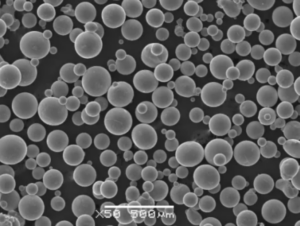Visión general de CoCrW Polvo
El polvo de CoCrW (cobalto-cromo-tungsteno) es un polvo de aleación metálica altamente especializado que se utiliza habitualmente en sectores que requieren una resistencia al desgaste, una solidez y una resistencia a la corrosión superiores. Es muy conocido por sus aplicaciones en entornos de alta temperatura, como la industria aeroespacial, las turbinas de gas, los dispositivos médicos y la fabricación aditiva. Esta guía profundiza en el intrincado mundo del polvo de CoCrW, sus distintos grados y su papel fundamental en todos los sectores.
Este exhaustivo artículo ofrece información sobre la tipos, composición, propiedades, aplicaciones, y precios de varios modelos de polvo de CoCrW. También compara los pros y los contras de cada variante y responde a preguntas habituales relacionadas con su uso.
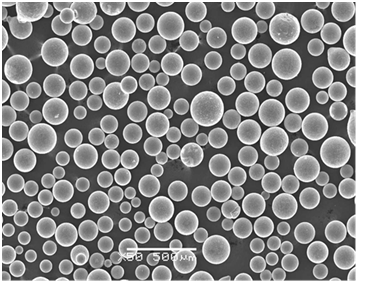
Composición del polvo de CoCrW
La aleación CoCrW se define por su mezcla única de Cobalto (Co), Cromo (Cr), y Tungsteno (W)aunque los porcentajes exactos pueden variar según las distintas calidades y aplicaciones. La composición general confiere a este polvo excelentes propiedades mecánicas, especialmente en entornos de alta temperatura.
Composición típica
| Elemento | Rango porcentual | Función en la aleación |
|---|---|---|
| Cobalto (Co) | 50-65% | Actúa como metal de base, proporcionando resistencia, tenacidad y resistencia al desgaste, especialmente a altas temperaturas. |
| Cromo (Cr) | 20-30% | Aumenta la resistencia a la corrosión, especialmente en entornos difíciles, y contribuye al endurecimiento de la superficie. |
| Tungsteno (W) | 5-10% | Aumenta la resistencia a altas temperaturas y mejora la resistencia al desgaste y la dureza sin hacer la aleación demasiado quebradiza. |
| Carbono (C) | 0.1-1% | Forma carburos que mejoran aún más la resistencia al desgaste y la dureza, pero deben equilibrarse para evitar que la aleación se vuelva demasiado quebradiza. |
| Silicio (Si) | 0.2-1% | Mejora la resistencia a la oxidación y favorece la maquinabilidad. |
| Manganeso (Mn) | 0.5-2% | Actúa como desoxidante y mejora la tenacidad de la aleación, al tiempo que contribuye a la resistencia a la corrosión. |
Características del polvo de CoCrW
Lo que hace único al polvo de CoCrW es su extraordinaria combinación de propiedades mecánicas y estabilidad térmica. Profundicemos en sus características definitorias:
| Propiedad | Detalles |
|---|---|
| Resistencia a altas temperaturas | El polvo conserva su integridad mecánica incluso a temperaturas elevadas superiores a 800°C. |
| Resistencia al desgaste | Esta aleación presenta una resistencia excepcional al desgaste, por lo que es ideal para herramientas de corte y turbinas. |
| Resistencia a la corrosión | Gracias a su alto contenido en cromo, el polvo de CoCrW resiste la oxidación y la corrosión, incluso en entornos hostiles como el agua salada o las condiciones ácidas. |
| Dureza | La aleación mantiene un alto nivel de dureza, normalmente entre 500 y 700 HV (dureza Vickers). |
| Resistencia a la fatiga térmica | Gracias a su excelente estabilidad térmica, soporta repetidos ciclos de calentamiento y enfriamiento sin sufrir una degradación significativa. |
Aplicaciones del polvo de CoCrW
Los polvos de CoCrW se utilizan en diversas aplicaciones industriales, especialmente en entornos que exigen durabilidad, resistencia al calor y un desgaste mínimo.
Aplicaciones comunes del polvo de CoCrW
| Industria | Solicitud |
|---|---|
| Aeroespacial | Motores a reacción, álabes de turbina y otros componentes de alta temperatura por su resistencia al desgaste y su capacidad para mantener la resistencia a altas temperaturas. |
| Productos sanitarios | Articulaciones artificiales, implantes dentales y otros implantes biomédicos gracias a su biocompatibilidad y resistencia a la corrosión. |
| Turbinas de gas | Componentes de sección caliente que necesitan mantener la integridad mecánica a altas temperaturas y resistir la corrosión de los gases de combustión. |
| Automotor | Turbocompresores, válvulas de escape y otros componentes de automoción de alta temperatura que requieren una gran resistencia al desgaste y a la fatiga por calor. |
| Fabricación aditiva | Se utiliza en impresión 3D para crear piezas personalizadas de alto rendimiento para los sectores aeroespacial, médico y energético. |
| Energía | Componentes de reactores nucleares o sistemas energéticos que experimentan temperaturas extremas y entornos corrosivos. |
| Herramientas de corte | Brocas, hojas de sierra y otras herramientas expuestas a condiciones de desgaste intenso, donde se requiere una durabilidad prolongada. |

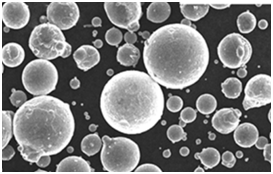

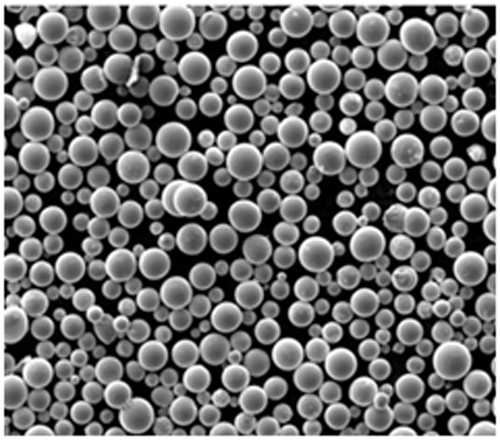
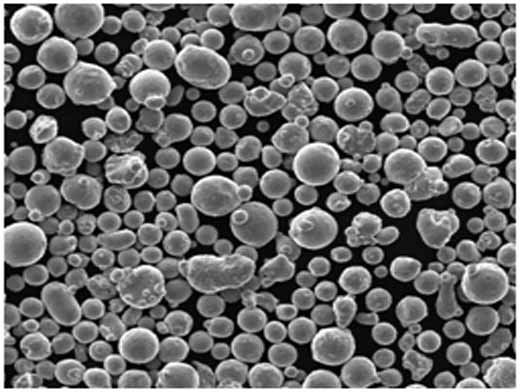

Top CoCrW Polvo Modelos: Resumen detallado
A continuación, desglosamos algunos de los principales modelos de polvo de CoCrW disponibles en el mercado, destacando sus propiedades únicas y usos típicos.
| Modelo | Composición | Propiedades clave | Aplicación típica |
|---|---|---|---|
| estelita 6 | Co-28Cr-4W-1,2C | Excelente resistencia al desgaste y a la corrosión, gran dureza (450-500 HV) | Herramientas de corte, asientos de válvulas e implantes médicos |
| Stellite 21 | Co-27Cr-5Mo-0,25C | Resistencia superior al gripado, buena resistencia a la corrosión | Componentes de turbina, válvulas de escape |
| MetcoClad 6250 | Co-29Cr-8,5W-1,5C | Alta resistencia a la oxidación y al desgaste | Componentes de la turbina de sección caliente |
| Haynes 188 | Co-22Cr-14W-0,1C | Resistencia a altas temperaturas y a la oxidación | Álabes de turbina de gas, válvulas de escape |
| CoCrMo F-75 | Co-28Cr-6Mo-0,3C | Biocompatible, excelente resistencia al desgaste | Implantes médicos, aplicaciones dentales |
| Tribaloy T-400 | Co-8Cr-28Mo-1,2C | Excepcional resistencia al desgaste y a la corrosión en aplicaciones de alta temperatura | Juntas de bomba, cojinetes |
| Ultimet | Co-26Cr-9Mo-2W | Combina buena tenacidad y resistencia a la corrosión | Equipos de procesamiento químico |
| Aleación CoCrW L605 | Co-20Cr-15W-10Ni | Excelente resistencia a la oxidación a altas temperaturas | Motores a reacción, aplicaciones nucleares |
| Duron-25 | Co-25Cr-7W-1Mo | Extrema dureza y resistencia a la corrosión | Placas de desgaste, aplicaciones de cara dura |
| Aleación de CoCr MP35N | Co-21Cr-9Mo-10Ni-1.2Ti | Excelente resistencia a la fatiga y a la corrosión | Dispositivos médicos, aplicaciones aeroespaciales |
Especificaciones, tamaños y normas para el polvo de CoCrW
El polvo de CoCrW se presenta en diferentes tamaños, en función del uso al que se destine. A continuación se indican algunos tamaños, especificaciones y normas comunes utilizados para evaluar la calidad del polvo para diferentes aplicaciones.
| Especificación | Alcance típico | Detalles |
|---|---|---|
| Tamaño de las partículas (µm) | 15-53 µm, 45-105 µm | Los polvos finos se utilizan para la impresión 3D, mientras que los de mayor tamaño son más adecuados para aplicaciones de recargue duro y pulverización térmica. |
| Dureza (HV) | 450-700 HV | Dependiendo de la aleación, los polvos de CoCrW presentan una gran dureza, lo que los hace ideales para aplicaciones de desgaste. |
| Normas | ASTM F75, ISO 5832-4, AMS 5796 | Se trata de normas reconocidas por la industria para aplicaciones biomédicas, aeroespaciales y de resistencia al desgaste de las aleaciones de CoCrW. |
Precios y proveedores de polvo de CoCrW
El precio del polvo de CoCrW puede variar significativamente en función de la composición de la aleación, la cantidad comprada y el proveedor. A continuación se ofrece una comparación general de proveedores y precios:
| Proveedor | Precio (por kg) | Características notables |
|---|---|---|
| Höganäs AB | $200 – $300 | Conocida por producir polvo de alta calidad para la fabricación aditiva |
| Sandvik Osprey | $250 – $400 | Ofrece una amplia gama de polvos de CoCrW para diversas aplicaciones industriales |
| Tecnología Carpenter | $220 – $350 | Aplicaciones aeroespaciales y médicas |
| Kennametal Stellite | $180 – $290 | Especializada en polvos resistentes al desgaste para herramientas y equipos |
| Oerlikon Metco | $230 – $380 | Reconocida por sus aleaciones de alto rendimiento para turbinas de gas |
Ventajas y limitaciones del polvo de CoCrW
Elegir el material adecuado para una aplicación determinada suele implicar sopesar los pros y los contras. A continuación se exponen algunas de las ventajas y limitaciones del polvo de CoCrW:
| Ventajas | Limitaciones |
|---|---|
| Gran resistencia al desgaste y a la corrosión | Mayor coste en comparación con los aceros estándar u otras aleaciones |
| Excelente rendimiento a altas temperaturas | Requiere equipos especializados de manipulación y procesamiento |
| Biocompatibilidad para usos médicos | La dureza puede dificultar el mecanizado |
| Larga vida útil en entornos de alto estrés | Fragilidad a niveles muy altos de contenido de carbono |

preguntas frecuentes
| Pregunta | Respuesta |
|---|---|
| ¿Cuáles son las principales ventajas de utilizar polvos de CoCrW en la fabricación? | Los polvos de CoCrW ofrecen una resistencia superior al desgaste, a la corrosión y a las altas temperaturas, lo que los hace ideales para entornos difíciles como las aplicaciones aeroespaciales y médicas. |
| ¿En qué se diferencia el CoCrW del acero inoxidable? | Aunque el acero inoxidable es menos caro, el CoCrW ofrece una resistencia al desgaste y un rendimiento a altas temperaturas mucho mejores, aunque puede resultar más difícil de mecanizar. |
| ¿Puede utilizarse polvo de CoCrW para la impresión 3D? | Sí, determinados grados de polvo de CoCrW, como el Stellite 6, se utilizan habitualmente en la fabricación aditiva para crear piezas de alto rendimiento con geometrías complejas. |
| ¿Es biocompatible el CoCrW? | Sí, muchas aleaciones de CoCrW, en particular las de bajo contenido en carbono como CoCrMo F-75, se utilizan en implantes médicos por su excelente biocompatibilidad y resistencia al desgaste. |
| ¿Qué industrias utilizan con más frecuencia los polvos de CoCrW? | Los polvos de CoCrW se utilizan ampliamente en la industria aeroespacial, los dispositivos médicos, la energía y la fabricación de herramientas, especialmente en aplicaciones que requieren una gran durabilidad y resistencia al calor. |
| ¿Cómo se procesa normalmente el polvo de CoCrW? | Entre los métodos de procesado habituales se encuentran la pulverización térmica, la fabricación aditiva (impresión 3D) y el recargue duro. |
Conclusión
Polvo de CoCrW es un material de primera calidad muy apreciado por su excepcional rendimiento en condiciones extremas, como altas temperaturas y entornos corrosivos. Su versatilidad lo hace adecuado para aplicaciones que van desde motores a reacción hasta implantes médicos. Ya sea para fabricación aditiva, turbinas de gas o componentes resistentes al desgaste, el polvo de CoCrW ofrece una solución fiable, duradera y eficaz.
Si explora a fondo sus características, aplicaciones y proveedores, podrá tomar una decisión informada sobre la mejor manera de incorporar el CoCrW a su próximo proyecto.

